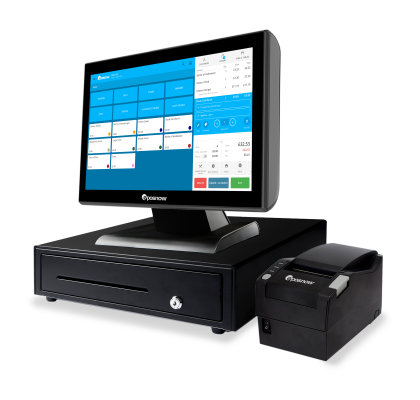Cost Focus Strategy Explained
All companies need a business plan or strategy in order to perform well. There are many different elements that could be included in this business strategy, some of the most important being the pricing and marketing of products.
In this article, we cover what a cost focus strategy is, how you can apply it to your business, and some of the advantages of this approach.
What is a cost focus strategy?
A cost focus strategy is when businesses attempt to attract customers based on price. Companies who use this strategy aim to offer the lowest price on the market for their goods or service by undercutting their competitors’ prices. Companies that use this strategy often aim to serve a specific, segmented target market.
A focused cost strategy also aims to reduce operational costs within the business as much as possible. For this reason, people often confuse cost focus with price focus. Price focused enterprises look for ways to reduce the price they pay for stock and try to sell items at the lowest price possible. They aim to be cost leaders, but sometimes this can come at the expense of their profit margin as they don’t earn very much per sale.
On the other hand, cost focus concentrates on reducing costs, improving financial efficiency, and offering temptingly low prices too, widening the markup price of their product or service.
We see cost focus strategy examples when we look at brands like RyanAir, Primark (Penneys), Wal-Mart, and McDonald’s.
Why a focused, low-cost strategy works
There are numerous benefits to using a cost focus strategy.
Entice customers
The main benefit of cost focus is that customers feel that they are getting a bargain. As long as quality hasn’t been skimped to save the bottom line, customers will be attracted by a good value for money product or service.
Aid your branding
A cost-focus strategy is a low-cost, narrowly focused market strategy. However, it doesn’t necessarily mean your brand is ‘cheap’. Your pricing can (and will) inform your branding and customer base - whether you appeal to the everyday customer, the bargain hunter, or the investor.
Efficient supply chain
A streamlined supply chain process will reduce costs associated with dealing with third parties and intermediary businesses marking up the price.
Low operational costs thanks to automation & technology
Technology takes the hard work out of figuring out where financial drains lie. Sync your software with your POS to simplify business management and improve organisational efficiency.
Large quantity of stock
Good economies of scale are achieved through buying in bulk and having a good relationship with suppliers.
Faster product turnover through process automation
Standardising operational processes means less time to produce items, thus reducing time-to-market.
Improved training procedures
Another benefit of having an automated operational process is that it takes less time to train employees and reduces the likelihood of employee error.
Gain all the advantages of an EPOS system with detailed, flexible, downloadable reports, and so much more:
- Manage and update products quickly with easy to use software
- Expand your business into multiple channels and integrate with a variety of online platforms
- Manage multiple locations and salespoints with multi-site management
- Keep queues short with streamlined, modifiable sales processes
- Choose a setup that suits you with software and hardware options

How to create a cost focus strategy
To apply a cost focus strategy without harming revenue, businesses must cut costs in other business areas, such as marketing, labour, distribution, and packaging. Cost leaders must be stringent financially and find ways to improve overall operational efficiency.
Let’s get into some of how you can apply a cost focus strategy to your business.
Shop around
It may seem obvious, but shopping around can save your business a lot of money in the long run. It’s easy to assume that since you’ve been loyal to a specific supplier for a long time, they will reward you with the best prices. In reality, they are businesses too, so you may be able to find a lower price elsewhere or at least ask your current supplier to price match.
This goes beyond products, but services too. If your company relies on an external service provider for anything, be it marketing, accounting, or bookkeeping, you should regularly reflect on the cost of these services to ensure nobody else is offering the same quality service for a lower price. You could also save a lot of money by taking on these services yourself.
Implement advanced technology
Advanced sales and business technology can differentiate between a surviving business and a thriving business. Adopt a point of sale (POS) system dedicated to your industry and offers customisations and add-ons that are personalised to the needs of your business. POS systems provide detailed reports on revenue and cost, designed to give business owners the opportunity to spot weaknesses and make actionable changes.
Your POS system should be the backbone of your business. It allows you to collect customer payments, function in a high-sales environment, and innovate and reorganise your business processes with valuable insights and analytics.
High asset utilisation
In the hospitality industry, high asset utilisation refers to maximizing the use of the service within a certain period of time [1]. For example, a bar or restaurant that aims to increase table turnover time serves more customers who stay for a shorter time instead of welcoming customers to sit for a few hours.
Or a spa that completes a massage within one hour instead of two. Thus, more clients are served in less time by reducing the time for delivering the service.
High asset utilisation involves mass-producing standardised products with similar materials in product-based industries. This might look like a furniture company producing 100s of one model of chair made in one size and one colour, rather than producing 10s of custom-built chairs that follow unique dimensions and customer requests. It would be better still if the screws used to produce the chairs were the same needed to make tables too, meaning that inventory can be repurposed, and nothing is wasted.
Increase production scale
High asset utilisation and high production scale go hand in hand. Here, costs are reduced since items are purchased in bulk, leading to better prices with suppliers. As well as having a cost advantage, businesses that scale often have more negotiating power, more flexibility with pricing, and the ability to withstand competition more effectively. It also gives a company more control over suppliers since the company’s orders will make a larger share of the supplier’s business operations [2].
This way, companies can offer lower prices to customers and operate securely, knowing that they have a large inventory.
Reduce staff costs
Reducing staff costs doesn’t mean letting people go, it just means scheduling more strategically. The typical labour cost for a small business is between 20% and 35% [3]. Hospitality and retail business owners must walk the tightrope between making sure to schedule enough employees to support spikes in customer sales and traffic and ensuring they don’t schedule too many people during hours where there aren’t a lot of sales.
To do this, businesses must identify sales trends. Use your POS system to identify peaks and dips in foot traffic and sales, then schedule accordingly to support both your profit margin and the customer experience. POS systems like Epos Now provide detailed reports that show sales, current labour and profit by specific times, days, weeks and months. Businesses can set wage targets as part of their overall budget and make better business decisions using these metrics.
Get started with Epos Now
Simplify business management by investing in a powerful point of sale system. Epos Now was founded by business owners for business owners. Therefore, we understand the challenges of pricing, strategic planning, and selecting the right technology for your business.
With Epos Now POS, you can manage all aspects of pricing, inventory, sales, and purchases right from your POS screen.
- Track single item performance so you can forecast with accuracy
- Train staff within minutes on the user-friendly interface
- Easily add, edit and bundle items to create new revenue opportunities
- Choose from over 100 app integrations for a truly personalised experience
- Securely back up business data and access your back office anywhere using the cloud.




